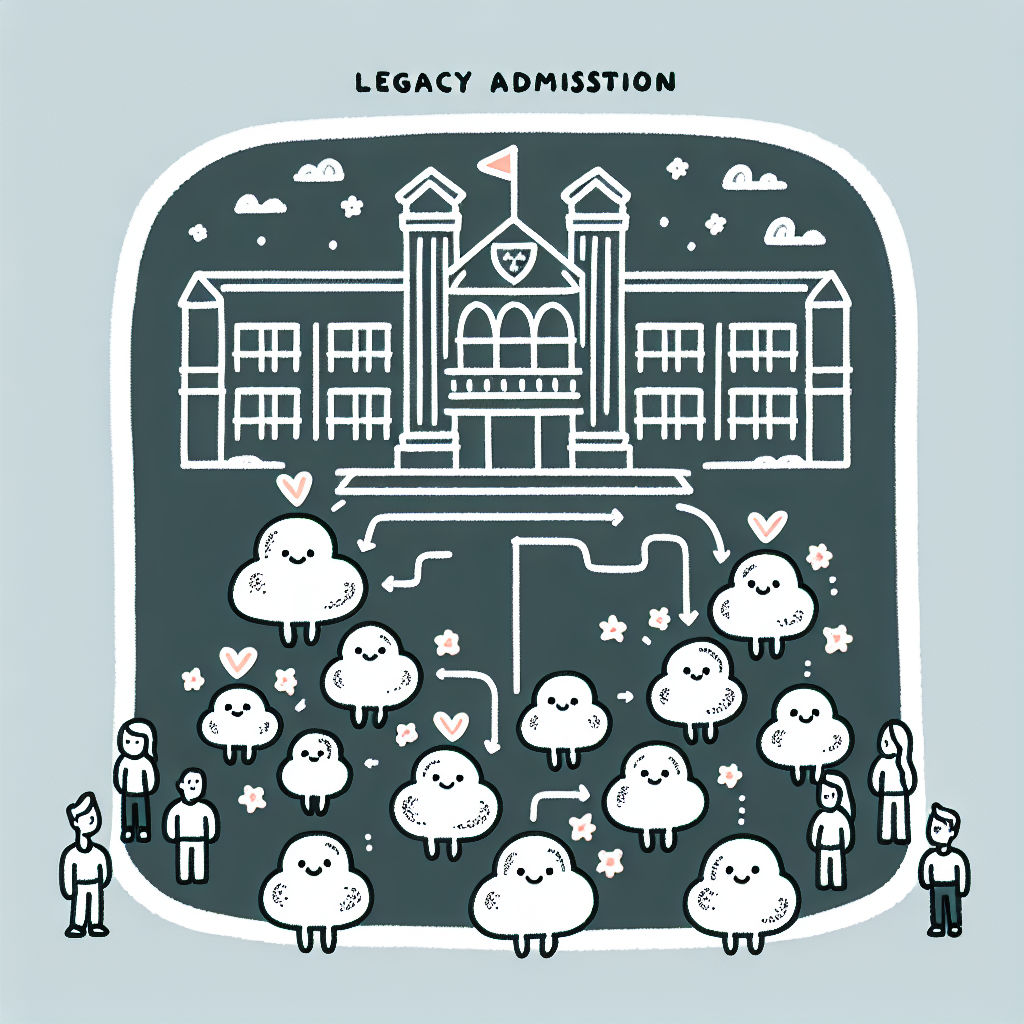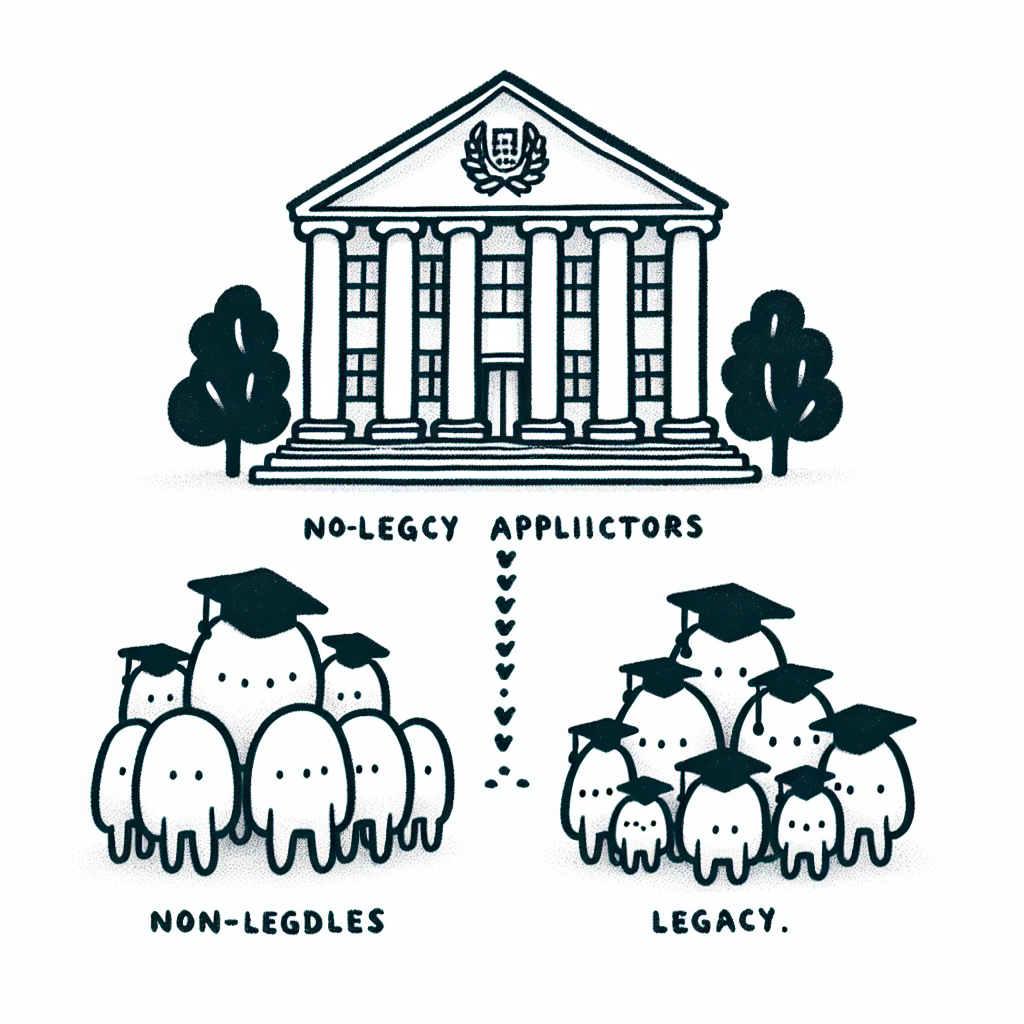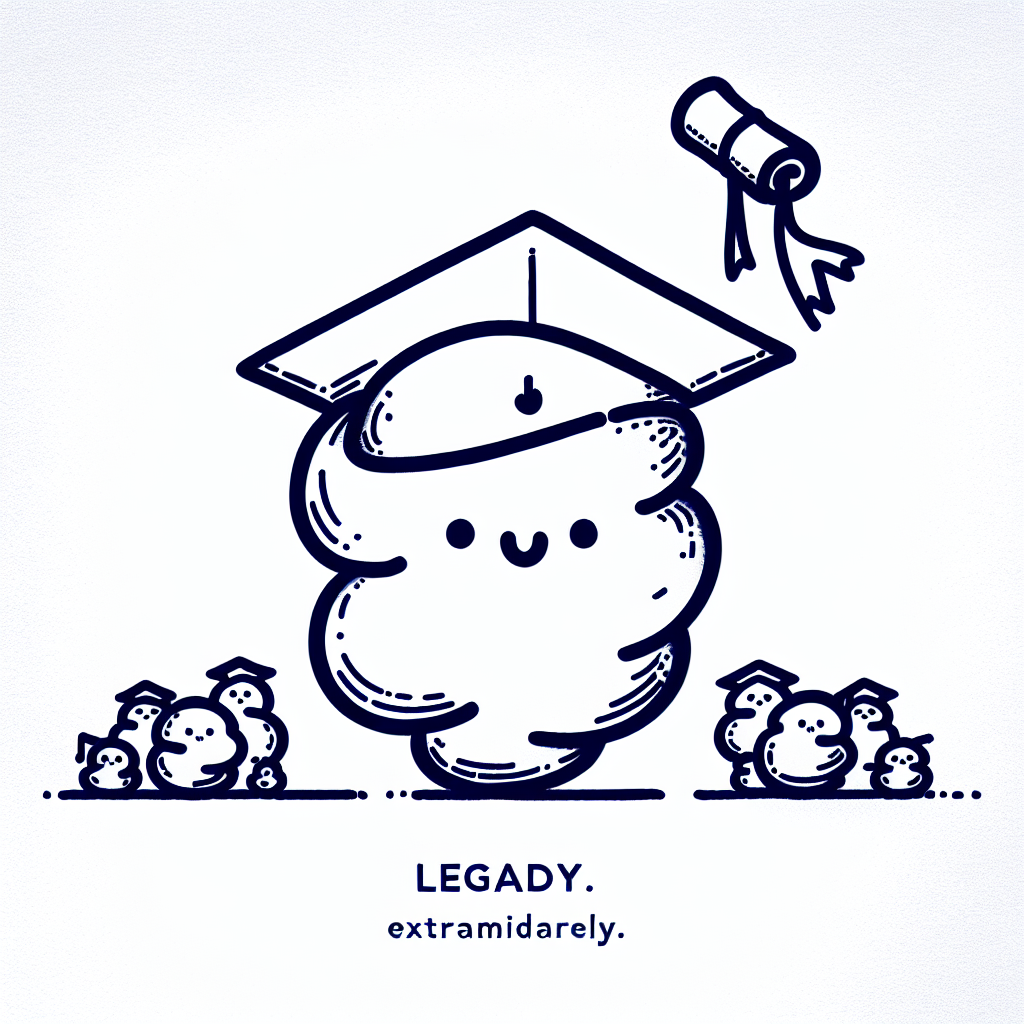Introduction
A legacy student is an applicant to a college or university who has a familial connection to alumni, most commonly a parent or grandparent. This relationship can play a significant role in the admissions process at many U.S. institutions.
Legacy admissions policies have long been a feature of American higher education. These policies often give preferential treatment to legacy students during the admissions review, under the premise that alumni connections can enhance institutional loyalty and financial support. While not universal, many selective colleges have historically incorporated legacy status as one of several factors in evaluating applicants.
This article examines what is a legacy student in depth by exploring the origins of legacy admissions, how widespread the practice is today, its effects on college access and equity, and the growing debate over whether it should continue in modern admissions practices.

Defining Legacy Admissions
What Is a Legacy Student?
A legacy student is an applicant to a college or university who has a familial connection to an alumnus of that institution. Most commonly, this refers to a student whose parent attended the school, although some institutions also consider grandparents, siblings, or other relatives. The definition of a legacy can vary widely; for instance, some schools only recognize legacy status if the parent earned an undergraduate degree, while others may include graduate degrees in their criteria.
Historical Origins and Evolution
Legacy admissions policies began to take shape after World War II, during a time when elite colleges sought to maintain their traditional student demographics amid increasing demand for higher education. These policies were initially designed to preserve continuity and loyalty among alumni families, especially at Ivy League and other selective institutions. Over time, however, the practice has drawn criticism for perpetuating inequality and limiting access for students from underrepresented backgrounds. As public scrutiny has increased, some universities have reevaluated or eliminated legacy preferences, reflecting a broader shift in policy and public opinion.

Scope and Prevalence of Legacy Admissions
Understanding the scope of legacy admissions is essential to answering the question: what is a legacy student and how does this status influence college admissions? Legacy status—typically granted to applicants with family members who are alumni of the institution—continues to play a role in the admissions landscape of many colleges and universities in the United States.
National Overview
According to data from the National Center for Education Statistics (NCES), approximately 32% of selective four-year institutions in the U.S. consider legacy status in their admissions process (NCES). This indicates that nearly one-third of these institutions factor in familial alumni connections when evaluating applicants.
Private vs. Public Institutions
Legacy admissions are more prevalent at private colleges, where 42% report considering legacy status, compared to only 15% of public universities (NCES). Private institutions often cite motivations such as encouraging alumni donations, fostering long-term alumni engagement, and preserving institutional tradition as reasons for maintaining legacy preferences. In contrast, public universities, which are generally more focused on accessibility and equity, are less likely to consider legacy status.
Notable Examples
Many Ivy League schools and other elite private institutions are known for maintaining legacy admissions policies. These schools often benefit from strong alumni networks and significant fundraising capabilities tied to legacy families. However, some public flagship universities have moved away from legacy preferences, reflecting a shift toward more merit-based and inclusive admissions practices. This divergence highlights the varying institutional priorities that influence whether legacy status is considered in admissions decisions.

The Admissions Edge: How Legacy Status Impacts Acceptance
Legacy status can significantly influence the college admissions process, especially at elite institutions. When understanding what is a legacy student, it's important to recognize the measurable advantages legacy applicants often receive.
Statistical Advantage
Legacy applicants are admitted at rates two to five times higher than non-legacy applicants at Ivy League schools. This disparity highlights how legacy status can act as an informal boost during the admissions process (Wikipedia).
Case Studies
Several high-profile universities demonstrate how legacy status impacts admissions decisions:
- Harvard: Court documents from the 2019 Students for Fair Admissions lawsuit revealed that legacy applicants had a significantly higher acceptance rate than non-legacies. Internal reports showed legacy students were accepted at nearly 34%, compared to under 6% overall.
- Yale: A 2021 report from the Yale Daily News noted that legacy students made up about 14% of the undergraduate student body, with a disproportionately high acceptance rate.
- Princeton: In 2011, Princeton University acknowledged that legacy status played a role in its holistic admissions process, often providing a "tip" in borderline cases.
- Stanford: Though Stanford has not released detailed legacy admission stats in recent years, past data and anecdotal reports suggest that legacy status is included as a positive factor in the university's comprehensive evaluation process.
These examples illustrate that when considering what is a legacy student, the term often correlates with a real and measurable admissions advantage at selective colleges.

Impacts on Campus Demographics and Equity
Legacy admissions significantly influence who gets access to selective colleges, affecting racial, socioeconomic, and geographic diversity on campus. Understanding what is a legacy student is key to analyzing these disparities.
Racial Diversity
Selective colleges that consider legacy status tend to enroll a higher percentage of white students. Data shows that institutions with legacy preferences have 59% white undergraduates, compared to 51% at schools that do not consider legacy status (Forbes). This suggests that legacy admissions may contribute to lower racial diversity.
Socioeconomic Disparities
Legacy students are more likely to come from affluent backgrounds. At Harvard, for example, 30.9% of legacy students reported parental income over $500,000, while only 12.6% of non-legacy students fell into that income bracket (The Crimson). These numbers indicate that legacy policies often reinforce existing economic privilege, helping to preserve generational wealth within already advantaged families.
Geographic and Regional Inequities
Legacy admissions also create disadvantages for applicants from underrepresented regions and backgrounds, including first-generation college students, rural applicants, and international students. These groups often lack the familial connections that define what is a legacy student, placing them at a competitive disadvantage in selective admissions processes.

Academic Merit and Performance of Legacy Students
Performance Metrics
At institutions like Princeton, data suggests that legacy students can perform well academically. A survey conducted by The Daily Princetonian found that legacy students had higher median SAT scores and GPAs compared to their non-legacy peers, even when income levels were taken into account (Daily Princetonian). This challenges the assumption that legacy admissions always result in lower academic standards.
Debates on Meritocracy
Despite these performance outcomes, the inclusion of legacy preferences in college admissions continues to generate debate. Critics argue that giving admissions advantages to legacy applicants undermines the principle of meritocracy by favoring familial ties over individual achievement. Supporters of legacy admissions counter that they are just one factor in a holistic admissions process, which also considers extracurricular activities, personal background, and other non-academic qualities. The question remains whether legacy status should carry weight in a system meant to reward merit and potential.
Understanding what is a legacy student is crucial to evaluating how these considerations influence both individual outcomes and broader institutional goals.

Institutional Motivations and Justifications
Fundraising and Alumni Relations
One common reason institutions maintain legacy admissions policies is to strengthen alumni relations and enhance fundraising efforts. Legacy students—those whose family members previously attended the school—are often seen as a bridge to deeper donor engagement. Development offices may find it easier to solicit donations from alumni whose children or relatives are admitted, creating a cycle of giving tied to continued familial presence on campus. This financial implication makes legacy applicants a strategic focus for university fundraising strategies.
Community and Culture
Institutions often justify legacy admissions as a means to build a sense of continuity and tradition. By admitting legacy students, colleges aim to foster intergenerational loyalty, reinforcing a campus culture rooted in longstanding family connections. This continuity is argued to contribute to a stronger sense of community, where alumni and their descendants feel a lasting bond with the university. Proponents claim that this generational link enhances school spirit and loyalty, which in turn benefits the broader institutional identity.
Administrative Considerations
From an administrative standpoint, legacy admissions can offer certain efficiencies. Admissions officers may be familiar with the applicant's background through alumni networks, making the evaluation process more streamlined. Additionally, pressure from trustees and influential alumni networks can influence admissions offices to maintain legacy preferences. These stakeholders often advocate for legacy policies as part of their ongoing support and involvement with the institution, reinforcing the administrative rationale behind such practices.
In understanding what is a legacy student, it's clear that institutional motivations extend beyond academic merit, encompassing financial, cultural, and administrative dimensions.

Public Backlash and Policy Reform
Legal and Political Challenges
Legal challenges to legacy admissions have intensified in recent years, as critics argue that the practice violates principles of fairness and equal opportunity. Lawsuits have been filed against institutions that maintain legacy preferences, contending that these policies disadvantage qualified applicants who lack familial ties to the school. In several states, lawmakers have proposed or passed legislation to ban the use of legacy status in admissions decisions. For example, Colorado became the first state to prohibit public colleges from considering legacy status in 2021.
Institutional Shifts
In response to mounting criticism, some institutions have voluntarily ended legacy admissions. Johns Hopkins University eliminated legacy preferences in 2014 and reported a more diverse student body as a result. Similarly, Amherst College announced in 2021 that it would no longer consider legacy status in its admissions process. These changes have sparked mixed reactions. While many students and faculty have supported the move toward greater equity, some alumni and donors have expressed concern about the potential impact on tradition and financial contributions.
Public Opinion
Public sentiment around legacy admissions has shifted significantly. Critics argue that legacy preferences are incompatible with efforts to promote diversity, equity, and inclusion (DEI), as they often favor white, affluent applicants. Polling data reflects this growing disapproval: a 2023 Pew Research Center survey found that 75% of Americans believe legacy status should not be a factor in college admissions. Student activism has also played a role, with campus groups organizing petitions and protests to urge their institutions to abandon legacy-based admissions policies.
The intensifying debate over what is a legacy student highlights broader concerns about fairness and access in higher education.

The Future of Legacy Admissions
Trends Toward Elimination
In recent years, legacy admissions have come under increasing scrutiny, especially in the wake of affirmative action bans and decisions by the U.S. Supreme Court. These rulings have pushed many institutions to reevaluate how they select students, with a renewed emphasis on race-neutral and need-blind admissions policies. As colleges seek to comply with legal standards and public expectations, some are moving to eliminate legacy preferences entirely, viewing them as incompatible with goals of equity and merit-based access.
Alternatives and Innovations
In place of legacy preferences, many schools are investing in initiatives aimed at supporting first-generation and low-income students. These programs are designed to increase representation for groups historically underrepresented in higher education. Additionally, data-driven admissions models are gaining traction. These models analyze a broader range of metrics to evaluate student potential, helping institutions make decisions that are more equitable and objective.
Broader Implications for Higher Education
The move away from legacy admissions is prompting a fundamental rethinking of fairness and access in college admissions. As institutions reconsider the role of inherited advantage, they are also reassessing how legacy policies shape their identity and values. Eliminating or reducing legacy preferences signals a shift toward inclusivity and a commitment to leveling the playing field for all applicants. This transition could redefine what is a legacy student and how such status fits into the future landscape of higher education.

Conclusion
The question of what is a legacy student leads to broader issues surrounding equity and tradition in U.S. higher education. Legacy admissions play a complex role, often reflecting institutional history and alumni loyalty, while also raising concerns about fairness and diversity.
Key findings make this tension clear. Legacy status provides a significant admissions advantage, boosting chances for applicants with family ties to an institution (Wikipedia). However, legacy applicants are disproportionately white and wealthy, contributing to ongoing disparities in college access (Forbes, The Crimson). Despite these concerns, data suggests that in some contexts, the academic performance of legacy students equals or even exceeds that of their peers (Daily Princetonian).
As colleges and universities consider the future of admissions, they must weigh the value of tradition against the need for broader access and academic merit. Understanding what is a legacy student is essential to navigating this evolving landscape.














